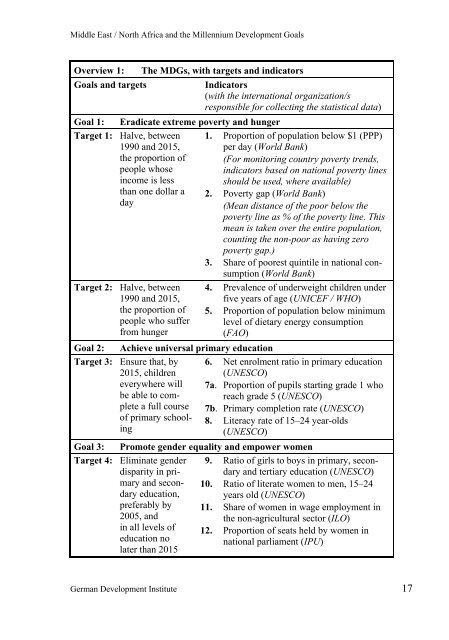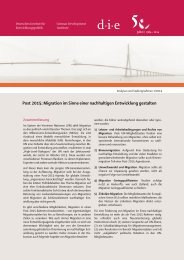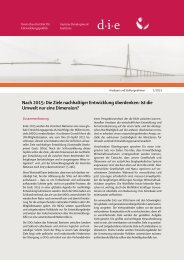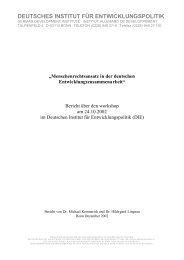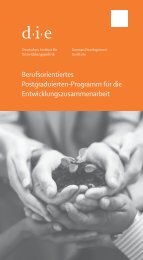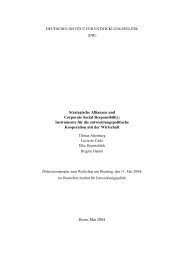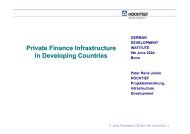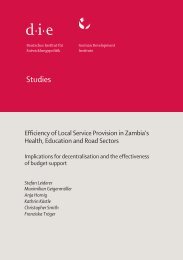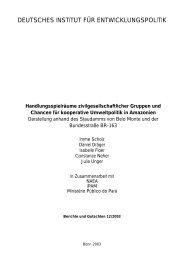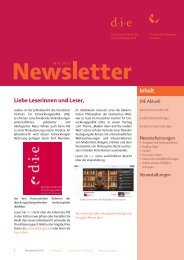Middle East / North Africa and the Millennium Development Goals ...
Middle East / North Africa and the Millennium Development Goals ...
Middle East / North Africa and the Millennium Development Goals ...
You also want an ePaper? Increase the reach of your titles
YUMPU automatically turns print PDFs into web optimized ePapers that Google loves.
<strong>Middle</strong> <strong>East</strong> / <strong>North</strong> <strong>Africa</strong> <strong>and</strong> <strong>the</strong> <strong>Millennium</strong> <strong>Development</strong> <strong>Goals</strong><br />
Overview 1: The MDGs, with targets <strong>and</strong> indicators<br />
<strong>Goals</strong> <strong>and</strong> targets Indicators<br />
(with <strong>the</strong> international organization/s<br />
responsible for collecting <strong>the</strong> statistical data)<br />
Goal 1: Eradicate extreme poverty <strong>and</strong> hunger<br />
Target 1: Halve, between<br />
1990 <strong>and</strong> 2015,<br />
<strong>the</strong> proportion of<br />
people whose<br />
income is less<br />
than one dollar a<br />
day<br />
Target 2: Halve, between<br />
1990 <strong>and</strong> 2015,<br />
<strong>the</strong> proportion of<br />
people who suffer<br />
from hunger<br />
Goal 2: Achieve universal primary education<br />
Target 3: Ensure that, by<br />
2015, children<br />
everywhere will<br />
be able to complete<br />
a full course<br />
of primary schooling<br />
1. Proportion of population below $1 (PPP)<br />
per day (World Bank)<br />
(For monitoring country poverty trends,<br />
indicators based on national poverty lines<br />
should be used, where available)<br />
2. Poverty gap (World Bank)<br />
(Mean distance of <strong>the</strong> poor below <strong>the</strong><br />
poverty line as % of <strong>the</strong> poverty line. This<br />
mean is taken over <strong>the</strong> entire population,<br />
counting <strong>the</strong> non-poor as having zero<br />
poverty gap.)<br />
3. Share of poorest quintile in national consumption<br />
(World Bank)<br />
4. Prevalence of underweight children under<br />
five years of age (UNICEF / WHO)<br />
5. Proportion of population below minimum<br />
level of dietary energy consumption<br />
(FAO)<br />
6. Net enrolment ratio in primary education<br />
(UNESCO)<br />
7a. Proportion of pupils starting grade 1 who<br />
reach grade 5 (UNESCO)<br />
7b. Primary completion rate (UNESCO)<br />
8. Literacy rate of 15–24 year-olds<br />
(UNESCO)<br />
Goal 3: Promote gender equality <strong>and</strong> empower women<br />
Target 4: Eliminate gender<br />
disparity in primary<br />
<strong>and</strong> secondary<br />
education,<br />
preferably by<br />
2005, <strong>and</strong><br />
in all levels of<br />
education no<br />
later than 2015<br />
9. Ratio of girls to boys in primary, secondary<br />
<strong>and</strong> tertiary education (UNESCO)<br />
10. Ratio of literate women to men, 15–24<br />
years old (UNESCO)<br />
11. Share of women in wage employment in<br />
<strong>the</strong> non-agricultural sector (ILO)<br />
12. Proportion of seats held by women in<br />
national parliament (IPU)<br />
German <strong>Development</strong> Institute 17


